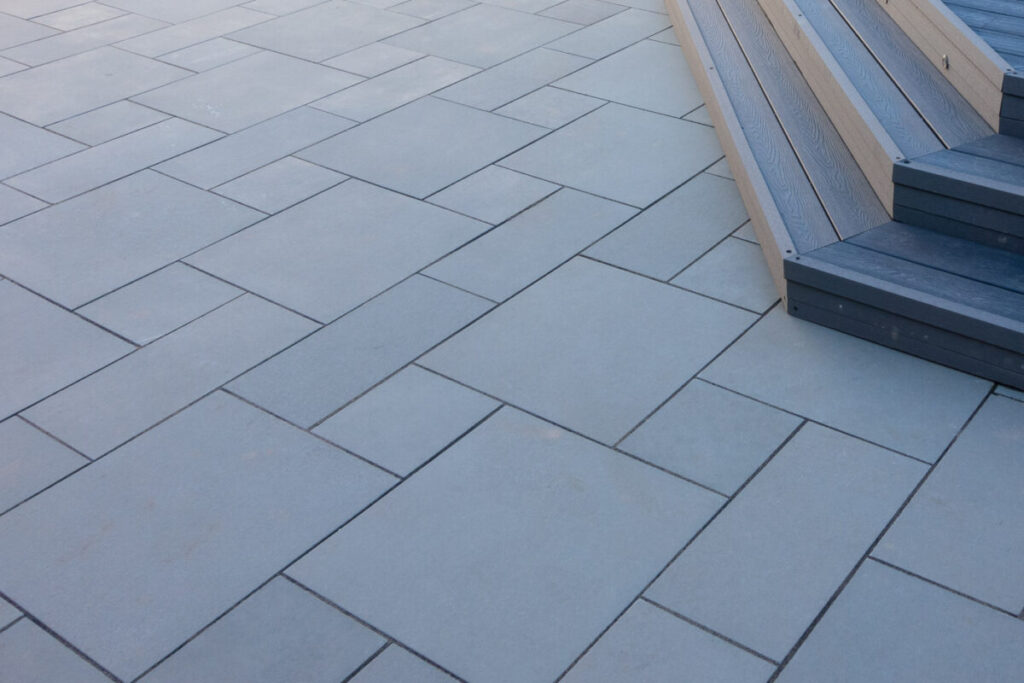
The Slab Effect
Love them or loathe them, chances are you have some slabs – paviours to us garden designers – somewhere in your garden. Incredibly versatile and varied paving slabs offer all sorts of opportunities through colour, function and form for garden owners and designers, but not all paviours are created equally. So, how do you decide what’s the ‘best’ paviour for your garden project? Here are some performance related things to consider as a starting point….
Most people tend to go for the look of a paving effect first but it’s worth knowing what you’re going to do with your newly paved area before you invest, so that the paviours themselves are fit for the purpose you intend. So, for instance, are you going to walk over them, drive over them, sit on them, park on them, etc? Will the area be high or low ‘traffic’? What are the prevailing weather conditions that it will be in, will it be in sunshine or shade, hot or cold, etc?
All of these things require varying performance capabilities from a paviour. In our UK climate for instance we need paviours that won’t crack in repeated freezing temperatures or go green with algae and lichen growth when sited in a shady spot, so in this regard when considering a paviour look for water absorption figures/guarantees from suppliers. Reputable suppliers will provide them but unfortunately that’s not the case with many stones available. The lower the water absorption figure, the better the chance of an algae-free shady spot or a cracking paviour in freezing conditions. The suppliers we use typically offer paviours with water absorption level of 1.7%.
Driving over paviours demands strength and flexibility, something that is usually best accommodated with smaller, albeit thicker, paviours. That’s why so many driveways use block paving or setts, the smaller shapes allow for ‘flex’ as the car wheels drive over them, but larger paviours can be used with some careful thought and a suitable base. Never opt for anything less than a 32mm thickness for driveway paviours and preferably choose 40mm, 50mm or more. Flexural strength is sometimes mentioned by suppliers and this refers to the strength of a material in response to flexing stress and force applications – generally the stronger a stone is the less chance there is of it failing or being attacked by frost once it’s laid.
If you’re going to use paviours on pathways and patios choose slip resistant finishes; this used to mean that it’s usually best to avoid highly polished paviours and lean instead to a more textured or rivened finish but many stone suppliers today promise slip resistance on the vast majority of their paving if it is maintained properly, so it is possible to get that smooth, contemporary look with a functional slip free surface with a little more effort. Sandstone or Yorkstone are popular natural stone choices here but we’re seeing many clients opting for vitrified paving now.
Vitrified Paving
The word vitrified technically refers to a conversion/glazing process that turns things into a glass like substance – so ceramic and porcelain are words sometimes used to mean very similar, if not the same, thing – but vitrified paving can look far more natural than you’d usually associate with ceramic or porcelain paviours. The benefits of vitrified paving include exceptional strength, high anti-slip properties and little, to no, water absorption which in turn means high performance and less maintenance requirements.
Of course I’ve only managed to touch upon a few things about paviours within this article – it’s a massive area but other things like colour, shapes, ethical sourcing, bases and the main deal breaker for most of us, price, will have to wait for another day…




